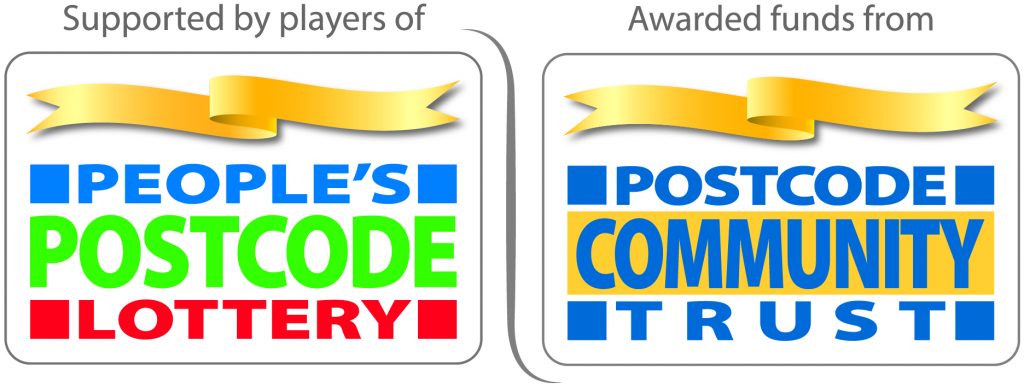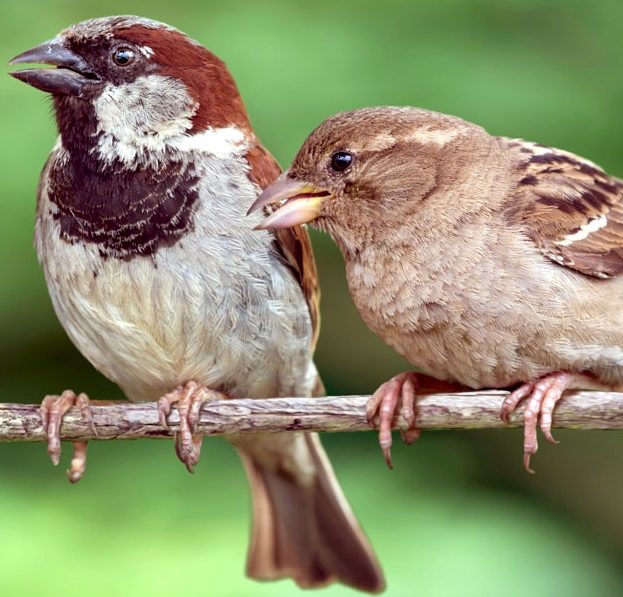
House Sparrows are in trouble
House Sparrows are now on the UK conservation Red List (species in need of urgent action). We have lost over 70% in the last 50 years – that’s 10.5 million pairs. Reasons for their decline in a city area like ours are thought to be reduction of places to nest, loss of habitat for foraging and loss of insect life.
The NESST House Sparrow project aims to help our House Sparrows and has been awarded a Magic Little Grant through Localgiving.
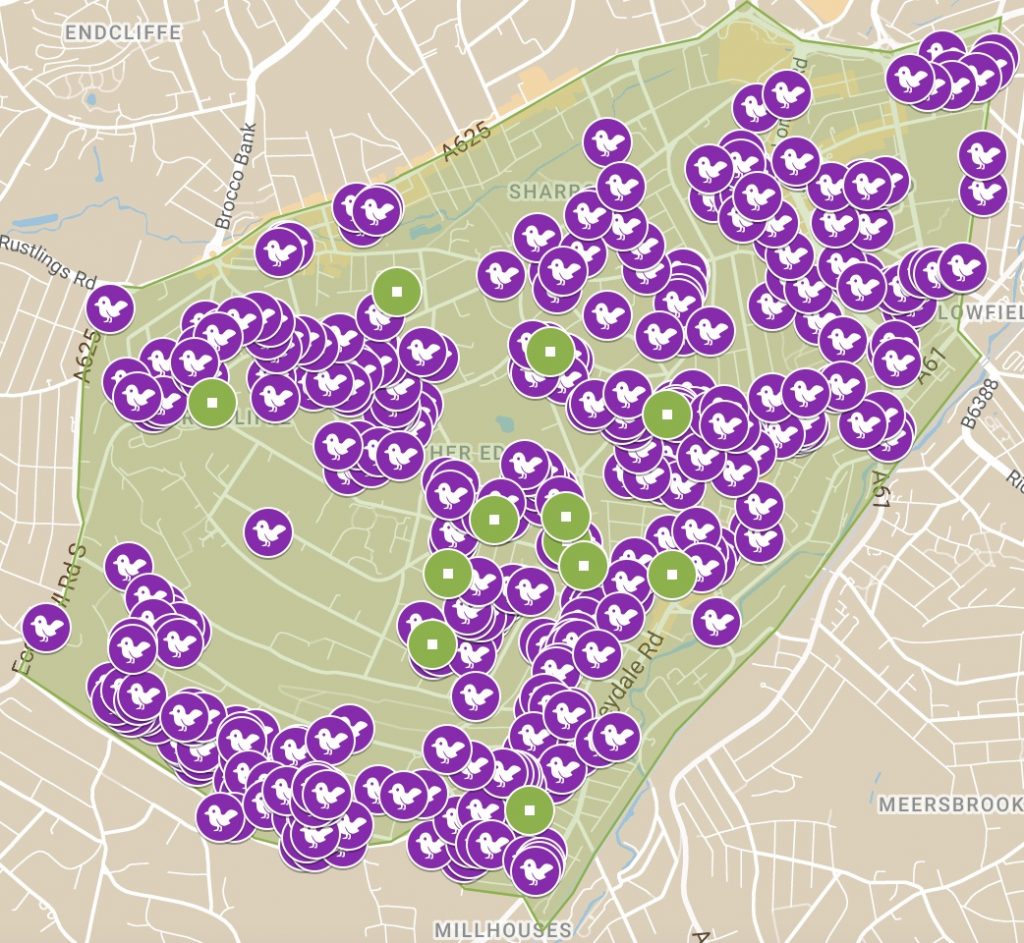
A survey by our volunteers in Nether Edge and Sharrow during April and May 2022 mapped the House Sparrow colonies in our area, and they are vulnerable. During 2023, we leafleted areas of concern, offering advice, nest boxes and free wildflower seeds. The map (left) was produced from the detailed survey undertaken in 2022. In April and May 2024, we are surveying again and the map will be updated.
Click on map to go to interactive version on google maps. Do any sparrows live near you?
Ways to help: food, habitat and nest boxes
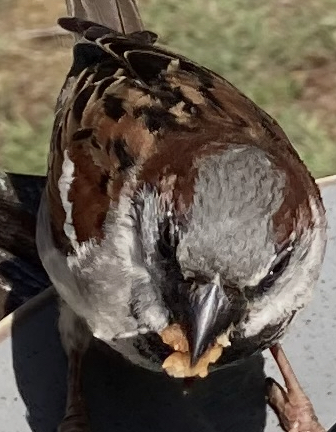
FOOD
Provide feeding stations with seeds and scraps, especially in Winter. In Spring and Summer, live meal worms will help to feed hungry chicks. Put fresh water nearby.
Let a part of your garden grow wild, or plant a wildflower patch – Autumn and Spring are good times to sow wildflower seeds. Wild flowers and grasses provide food for insects and birds. Hollow stems provide hibernation sites for insects and invertebrates such as beetles, weevils and spiders to over-winter: food for the birds. Don’t use pesticides – not surprisingly they kill off insects, and the wildlife that feeds on them. Supporting the insect population will help House sparrows and other declining garden birds. For a free wildflower seed pack please email us at nesstsparrows@btinternet.com with Wildflower Seeds in the subject line.
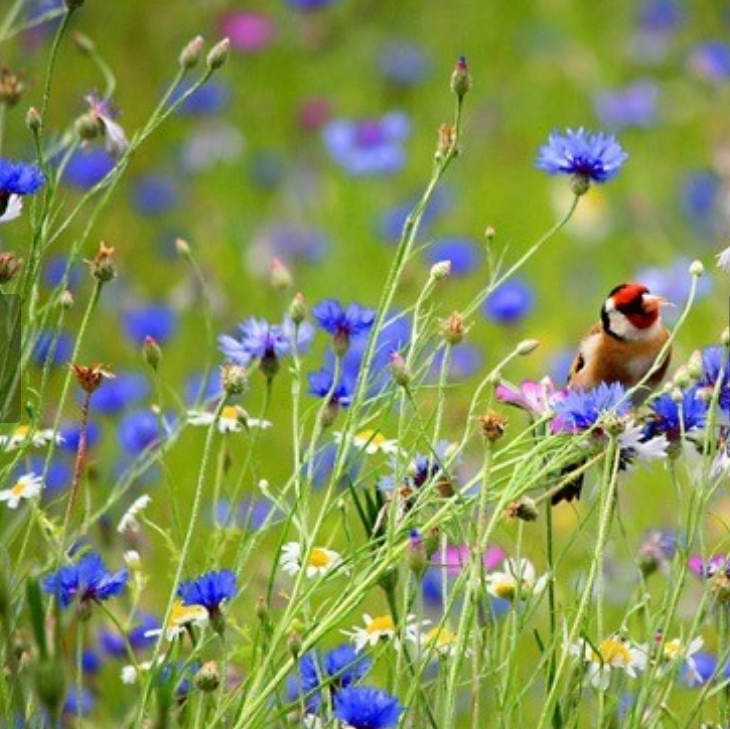
The pack contains 20 varieties of wildflower seeds, flowering May – Sept. These are quick instructions:
• Choose fairly sunny location ; coverage approx 1-1.5g per sq. metre
• Poor soil needed – clear it of grass (top inch of turf) and weeds, no compost
• Rake soil loose, scatter seeds Mar-April or Aug-early Autumn
• Press down lightly, water-in with fine spray head on watering can
• Keep moist in dry weather for the first year
• Put up strings/small windmills etc, to stop pigeons eating the seed!
• Enjoy the flowers and wildlife… • Cut down to a few inches in late August/early September, shake seeds onto soil
• Put remaining cuttings in compost, don’t leave on soil.
For full details on the list of seeds and more information on growing you can download a PDF here. For more information on making a wildflower meadow see here.
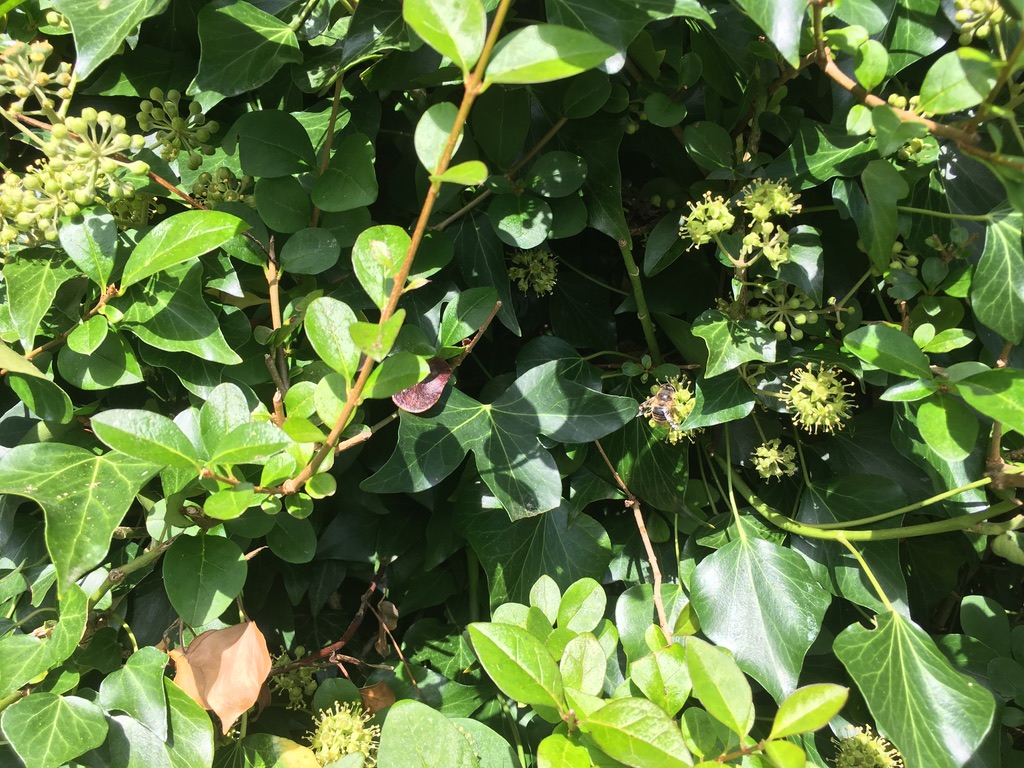
HABITAT
These sociable little birds like to live in loose colonies. Pairs often stay together for life and return to the same nest site each year. They usually feed and socialise within a few hundred metres of their nests. Leave hedges and shrubs such as hawthorn, to flower and fruit – more food for insects and birds. House Sparrows like hedges, shrubs, and climbing or rambling plants like ivy, bramble and wild roses – to roost, hide from predators and socialise in. Let your lawn grow and don’t be too tidy!
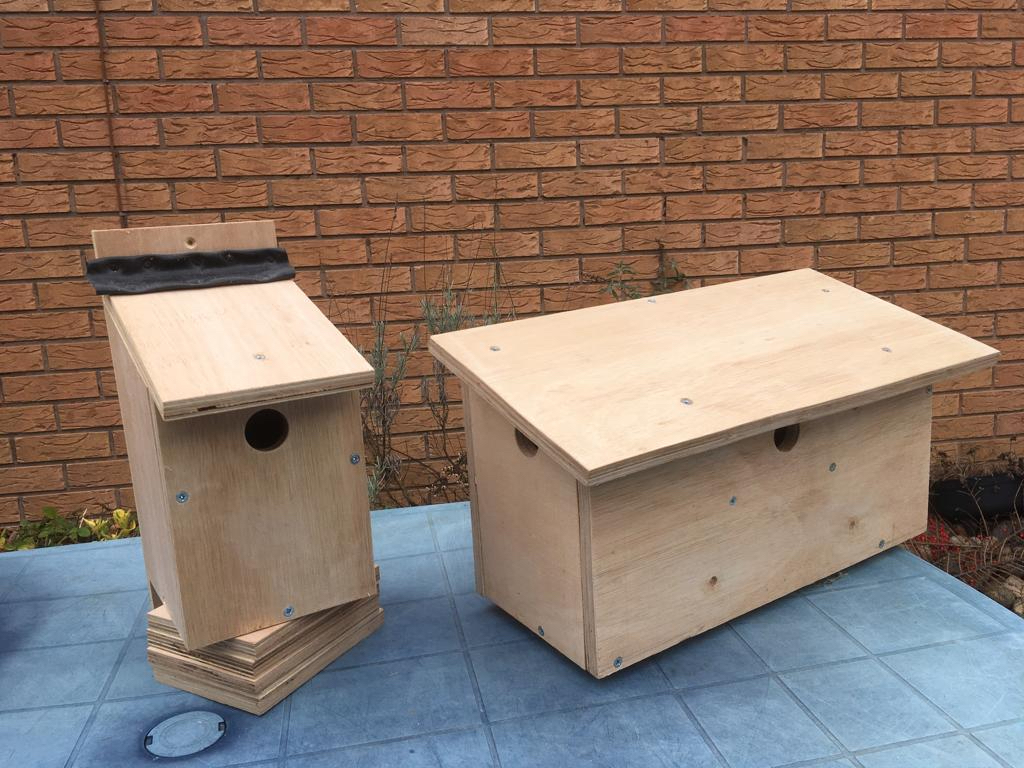
NEST BOXES
House Sparrows like to live next door to each other, hence the sparrow terrace box with three nests! But equally suitable is a group of three single boxes which might be more practical in your location. They will need to be sited away from prevailing wind and rain and not too sunny a spot. Our group can build, or help you build your own nest boxes. The photo on the left shows the single and the terrace boxes which the group have made.
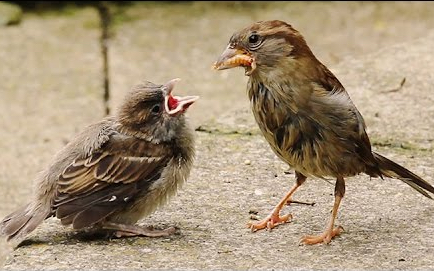
NESTING INFORMATION
House Sparrows usually start nesting in April, but as our climate warms, they seem to be starting earlier – so look out for nesting activity starting in March. Males will find a nest site and start singing beside it, to attract a female.
Leave out small bundles of dry grass, straw, cotton string, wool strands, and shreds of paper for them to use as nesting material.
Sparrows lay 2 -3 clutches of eggs through the season, up until August, but may lay a 4th clutch in a good year. 2 – 5 eggs are laid, at daily intervals, and both sexes may incubate the eggs from part way through the egg-laying.
Chicks hatch after 11 – 14 days, and are brooded (kept warm and protected by covering with the body), by both parents. Chicks can only control their own body temperature when 10 or 11 days old.
Chicks fledge (leave the nest and start learning to fly) 14- 16 days after hatching. They are unable to feed themselves for about a week, so the parents care for them for 2 weeks. But it’s mostly the male, as the female prepares for the next brood.
The young are fed on insects and invertebrates such as aphids, caterpillars, beetles, grasshoppers, and earthworms – plus any moist scraps that we humans provide.
Seeds and vegetable matter are given when food is scarce (eg in cold weather) and become more important when the young leave the nest. So keep your seed feeders and bird tables topped up, and grow those wild flowers!
Young sparrows will often gather in large flocks near a food source – so you may hear them chirping and twittering in a hedge or shrub, particularly just before they roost in the evening or when they get up in the morning.
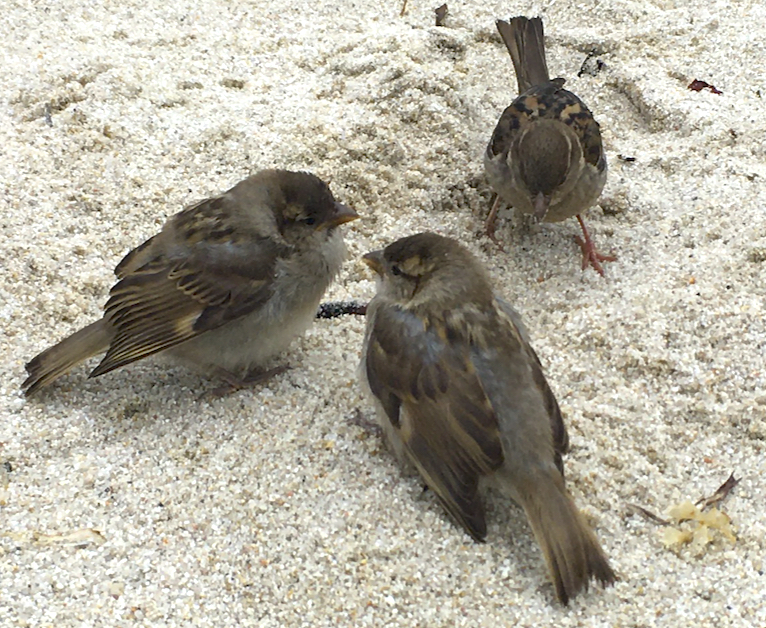
USEFUL LINKS AND FURTHER INFORMATION
Recent research on garden birds and pesticide use
Research by the British Trust for Ornithology into House Sparrow decline.
Woodland Trust hedgerow initiative
Notes on Native Hedgerow Management
Dr Ross Macleod Glasgow University House Sparrow Project
PDF leaflet (3.4MB) by BTO with helpful information including how to identify House Sparrows
Wildlife Trust advice on cleaning boxes and feeders

